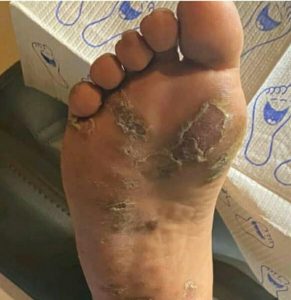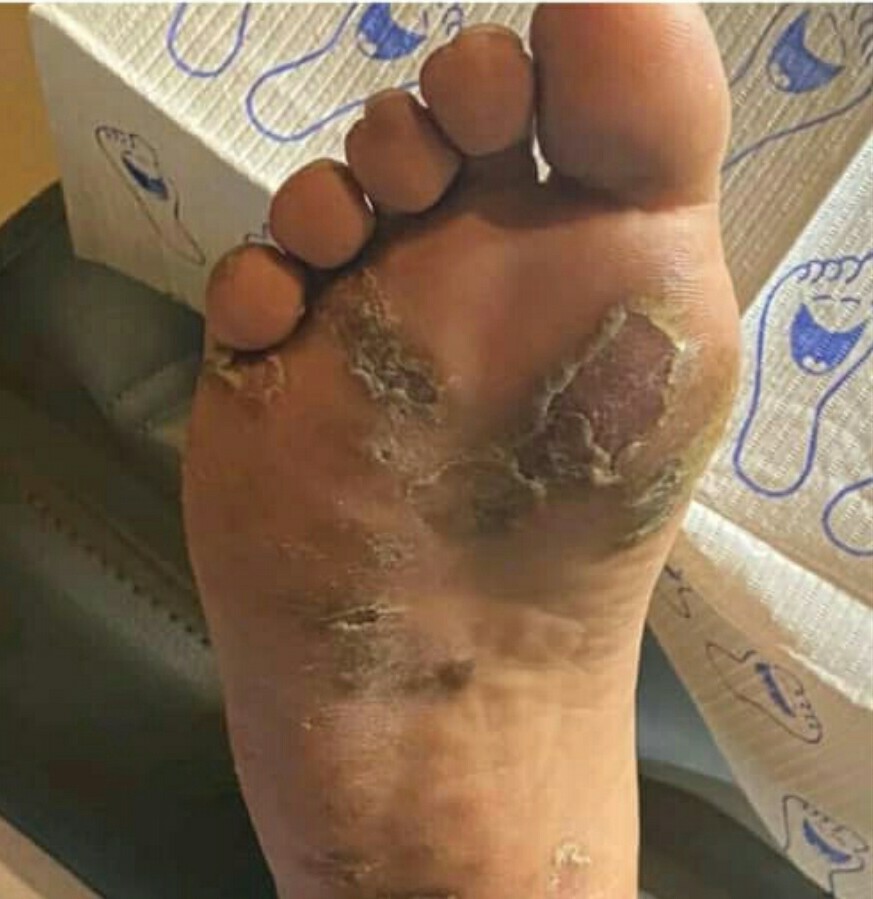See the home cure for athlete’s foot in Nigeria.
A contagious fungal infection that affects the skin on the feet. It can also spread to the toenails and the hands. Athlete’s foot commonly occurs in people whose feet have become very sweaty while confined within tight-fitting shoes.

Causes:
Athlete’s foot occurs when the tinea fungus grows on the feet. You can catch the fungus through direct contact with an infected person, or by touching surfaces contaminated with the fungus. The fungus thrives in warm, moist environments. It’s commonly found in showers, on locker room floors and around swimming pools.
Anyone can get athlete’s foot, but certain behaviors increase your risk.
Symptoms:
👣Itching, stinging, and burning between your toes or on soles of your feet
👣 Blisters on your feet that itch
👣 Cracking and peeling skin on your feet, most commonly between your toes and on your soles
👣Dry skin on your soles or sides of your feet
👣Raw skin on your feet
👣Discolored, thick, and crumbly toenails
👣Toenails that pull away from the nail bed
Part of the body athlete’s foot affects:
Anywhere on the skin but commonly between the toes as there is poor airflow and the area is prone to becoming moist. Symptoms include redness and itchiness in the area. There may be small raised lumps or very flakey white skin. Itchiness is almost always involved.
Who can athlete’s foot affect?
Anyone. Thrives in warm, moist skin, sweaty socks and shoes. The fungus that causes tinea is very contagious and can be found in most communal areas such as swimming pools, hotel carpets, bath mats.
Athlete’s foot isn’t serious, but sometimes it’s hard to cure. If you have diabetes or a weakened immune system and suspect you have athlete’s foot, you should call your doctor right away.
READ ALSO: Kooko (piles): Causes , symptoms, effects and treatment
See the home cure for athlete’s foot in Nigeria
Treatment involves using an anti-fungal product either in the form of a cream or a spray. Creams should never be used between the toes as creams make the area even more moist. It is really important that the socks and shoes are also treated.
Hydrogen Peroxide
Hydrogen peroxide can effectively kill the fungus on the surface level of the foot, as well as any surface bacteria that could cause an infection.
Pour hydrogen peroxide directly onto the affected area. Note that it may sting, and it should bubble, especially if you have open wounds. Do this twice daily until the infection subsides.
This article is the intellectual property of www.nimedhealth.com.ng





















